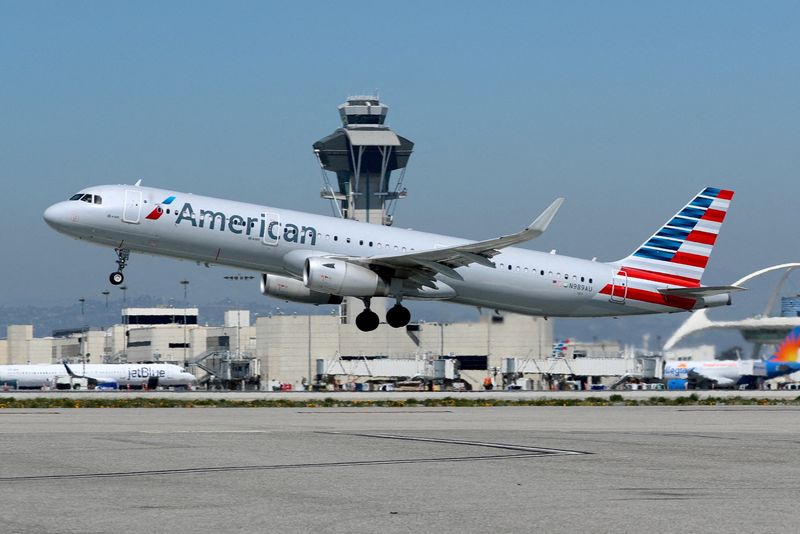By Rajesh Kumar Singh
CHICAGO (Reuters) - U.S. carriers including American Airlines (NASDAQ:AAL) Group Inc and United Airlines Holdings (NASDAQ:UAL) Inc are enjoying the strongest consumer demand in three years, but analysts and investors question how soon the good times might end as the growing risk of economic recession sparks worries about travel spending.
As earnings season starts on Thursday, investors are looking to find out how carriers plan to offset higher costs and protect profit once consumer demand softens.
The airline industry, which is facing higher fuel and wage bills, has been relying on robust demand to mitigate inflationary pressure with higher fares.
American Airlines on Tuesday forecast stronger profit in the third quarter as it expects higher ticket prices to offset a run-up in operating costs. The Texas-based carrier, however, did not provide any commentary on the booking trends.
Airline fares were up 33% year-on-year in August and have been one of the biggest contributors to a jump in U.S. consumer prices.
With the Federal Reserve aggressively raising interest rates to tame inflation by lowering demand and slowing economic growth, the industry's pricing power is under threat.
Analysts at Jefferies expect a sharp slowdown in the industry's revenue next year.
"We struggle to get positive on a pricing story when the Fed is actively targeting airline fares as a component of inflation," they said in a note.
Those worries have led to a 38% decline in the NYSE Arca Airline index this year, taking the focus away from what is shaping up to be the industry's best earnings performance in three years.
Daniel McKenzie, an analyst at Seaport Research Partners, last month cut 2023 earnings estimates for major carriers after the Fed delivered a third straight 75 basis-point interest rate hike.
Carriers have been playing down demand concerns, saying there has been no slowdown in post-summer travel bookings.
Travel demand tends to cool after Labor Day, which marks the unofficial end of the U.S. summer season. But airlines say travel bookings, thus far, have been resilient.
After surpassing 2019 levels during last month's Labor Day holiday weekend, U.S. passenger traffic has been averaging about 92% of the pre-pandemic levels since the first week of September, according to Transportation Security Administration (TSA) data.
Reopening of borders as well as a strong U.S. dollar are encouraging more Americans to travel overseas, driving up the demand for international flights.
Delta Air Lines Inc (NYSE:DAL), which is due to report earnings on Thursday, has plans to operate more transatlantic flights this month than in October 2019.
It is not clear, however, if the demand will sustain. Britain's biggest airport, Heathrow, on Tuesday warned of a possible slowdown in travel demand this winter.
As companies call their employees back to office, business travel demand has received a boost. Still, a full-scale recovery in corporate travel - the industry's cash cow - is not in sight.
The Global Business Travel Association does not expect corporate spending to rebound to pre-pandemic levels before 2026 due to macroeconomic concerns.

Prior to the pandemic, business travel accounted for up to 50% of the U.S airline industry's passenger revenue, according to trade group Airlines for America.
"We're looking at business travel," Christopher Raite, senior analyst at Third Bridge, said. "That's really the key."